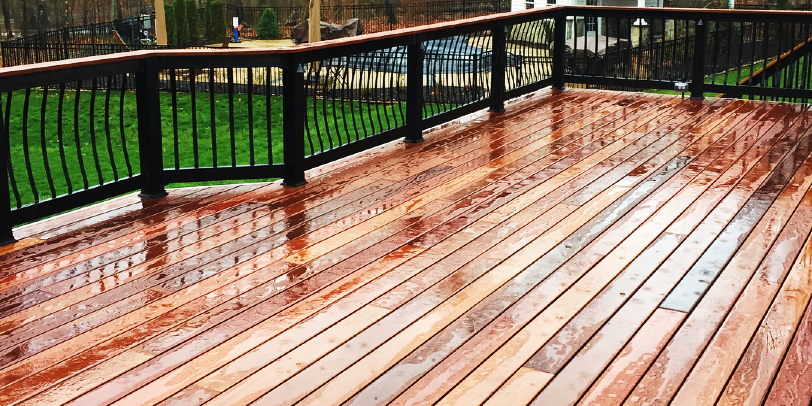Deck Staining Sparkle: Raise Your Outside Living Area
Picking the Right Stain for Your Fence: Tips and Factors To Consider
When it pertains to preserving and enhancing the appearance of your fencing, choosing the appropriate discolor is important. With a variety of options readily available, it can be overwhelming to establish which stain will certainly best fit your demands. This guide will certainly supply you with factors to consider and suggestions to aid you make an informed decision. We will certainly check out the various kinds of fence stains, aspects to take into consideration before choosing a tarnish, pointers for preparing your fence for staining, and the differences in between water-based and oil-based discolorations. Additionally, we will explore choosing the best stain color to enhance your fence and improve your outdoor space. By adhering to these guidelines, you can ensure that your fencing continues to be secured and cosmetically pleasing for several years to come.
Comprehending Different Kinds Of Fence Stains

On the various other hand, water-based discolorations are made from acrylic or latex and offer a much more refined shade to the wood. They produce a safety movie externally of the wood, stopping dampness from permeating in and protecting against UV damage. Water-based stains are much easier to tidy up and have a faster drying time compared to oil-based spots. They are additionally less likely to fade or split over time.
Picking in between oil-based and water-based stains depends on various aspects, consisting of individual choice, the preferred look, and the level of maintenance required. Oil-based discolorations are advised for surround high-traffic locations or those frequently revealed to extreme weather condition problems. deck staining. Water-based stains, on the various other hand, are a preferred selection for fencings in houses where look and simplicity of use are necessary
When picking the appropriate tarnish for their fence,Understanding the distinctions between oil-based and water-based stains aids house owners make an informed decision. Thinking about the particular needs of the fencing, such as its place, exposure to sunshine, and desired visual, will certainly make certain that the selected tarnish supplies lasting defense and boosts the general beauty of the fencing.
Aspects to Think About Before Picking a Stain

One more factor to take into consideration is the kind of wood your fencing is made from. Various types of timber take in discolorations differently, leading to differing degrees of color strength and resilience. Softwoods like yearn might need even more constant staining contrasted to hardwoods like cedar or redwood. In addition, specific timbers might be extra susceptible to concerns like rot or insect invasion, which might affect the choice of tarnish to safeguard and maintain the fence.
The climate and weather condition problems in your location must also be thought about. If you reside in a location with rough winter seasons or high moisture, you may require a tarnish that provides extra security versus moisture and UV rays. If your fencing is revealed to guide sunlight for long periods, a stain with UV inhibitors can aid protect against fading and staining.
Last but not least, it is essential to consider your wanted visual. Various spots offer numerous shades and surfaces, enabling you to customize the appearance of your fence (fence staining). Take into consideration the total design and style of your home, along with any kind of neighborhood guidelines or home owner organization guidelines that may dictate the acceptable tarnish shades
Tips for Preparing Your Fence for Discoloration
To prepare your fencing for discoloration, begin by thoroughly cleaning the surface area making use of a mild detergent and a pressure washing machine or scrub brush. Cleaning the fencing is a crucial step as it removes dust, grime, and any kind of previous layers that might disrupt the discoloration process. Begin by moistening the fencing with water and after that use a moderate cleaning agent making use of a scrub brush or a pressure washing machine with a low-pressure setting. Rub the surface delicately, paying extra interest to locations with stubborn discolorations or mold. Wash the fence completely with tidy water to eliminate all traces of cleaning agent.
This step is vital as staining a damp or damp surface can lead to poor adhesion and an unequal surface. Make sure that the fence is entirely dry prior to continuing with the staining procedure.
Before staining, examine the fence for any problems, such as loose boards or nails. This item aids to open up the timber pores, allowing the tarnish to permeate much more efficiently and uniformly.

Contrasting Water-Based and oil-based Spots
When choosing a tarnish for your fence, it is necessary to compare the features and benefits of oil-based and water-based discolorations. Both types of stains have their very own benefits and factors to consider, so it is essential to understand the differences in between them.
Oil-based discolorations are recognized for their sturdiness and resistance to put on and tear. Furthermore, oil-based spots have a tendency to last longer than water-based discolorations, making them a preferred selection for fencings.
On the various other hand, water-based discolorations are a lot more eco-friendly and less complicated to tidy up. They have a lower VOC (volatile organic substance) content, which indicates they release fewer dangerous fumes into the air. Water-based spots additionally completely dry quicker, enabling a quicker application and less downtime. They might not give the same level of security as oil-based stains, particularly in rough climate problems.
Eventually, the selection in between water-based and oil-based spots depends on your particular needs and choices. Think about variables such as longevity, environmental influence, and simplicity of application when making your decision. Consulting with a specialist or seeking recommendations from specialists can also assist ensure that you select the right discolor for your fence.
Choosing the Right Spot Shade for Your Fence
The choice of a suitable tarnish shade for your fence is a crucial aspect of improving its visual charm and enhancing the overall layout of your outdoor room (fence staining nashville tn). The best stain color can transform a level, normal fence right into a striking centerpiece that adds deepness and character to your residential or commercial property
When picking a discolor shade for your fencing, it is essential to consider the design and architecture of your home. If you have a typical or traditional design home, earthy tones such as browns and neutrals can create a cozy and welcoming appearance. On the various other hand, if you have a contemporary or modern-day home, you may think about selecting strong and lively shades that make a statement.
One more aspect to take into consideration is the natural surroundings of your residential property. If you have a great deal of greenery, a discolor shade that enhances the natural landscape, such as eco-friendlies or crimsons, can create a natural and unified look.
Additionally, it's worth thinking about the maintenance required for different discolor shades. Lighter shades often tend to show dirt and wear more quickly, while darker colors can conceal blemishes and call for much less frequent touch-ups.
Ultimately, the selection of tarnish shade for your fencing should show your individual style and choices - fence staining. Put in the time to check out various choices and speak with with specialists if required, to guarantee that you select the excellent discolor shade that boosts the elegance and appeal of your fence
Final Thought
In final thought, when it comes to choosing the right tarnish for your fencing, it is essential to understand the various kinds of discolorations readily available and take into consideration variables such as longevity and wanted appearance. Picking the ideal discolor color can boost the general looks of your fence.
We will certainly check out the different kinds of fencing spots, elements to consider prior to selecting a stain, pointers for preparing your fence for discoloration, and the distinctions in between oil-based and water-based discolorations.Differentiating in between oil-based and water-based stains is crucial when recognizing various types of fencing stains. Water-based discolorations are simpler to cleanse up and have a quicker drying time contrasted to oil-based spots. Additionally, oil-based discolorations tend to last longer than water-based discolorations, making them a prominent selection for fences.
In conclusion, when it comes to selecting the best tarnish for your fence, it is crucial to my website comprehend the various types of spots available and think about elements such as durability and preferred look.